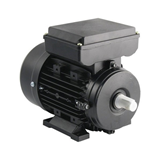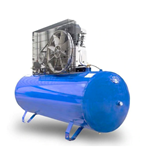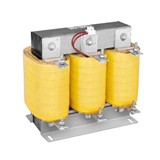Explore key trends in Australia’s electric truck market and practical steps your business can take to adopt cleaner, cost-effective freight solutions.
Key takeaways
- Electric trucks are accelerating their presence in Australia, supported by government incentives, technological progress, and growing environmental imperatives.
- Infrastructure readiness remains the biggest operational hurdle, particularly the availability of heavy vehicle charging stations and the need for depot electrification.
- Range and payload are improving, but matching electric trucks to your specific routes and freight needs is essential to avoid operational disruption.
- Maintenance costs for electric trucks can be significantly lower, but upfront purchase prices and infrastructure investment require careful financial planning.
- Compliance with evolving Australian emissions regulations and safety standards is mandatory, alongside tracking eligibility for incentives and rebates.
- Emerging trends such as renewable energy integration, smarter charging networks, and innovative financing models will shape the future electric truck landscape.
- Phased adoption combined with a mixed fleet strategy provides a practical pathway to electric fleet transition, minimising risk while capturing benefits.
- Charging infrastructure requires early planning, with depot upgrades costing between $100k–$250k and taking up to 9 months; government co-funding can help ease the financial load.
- Financing electric trucks involves navigating asset loans, leases, and bundled fleet models, with careful consideration of battery depreciation, available incentives, and total cost of ownership.
Introduction: Why electric trucks matter in Australia now
Australia’s freight sector is a cornerstone of the national economy, responsible for moving billions of dollars’ worth of goods across vast distances. However, this sector also faces rising pressure to reduce its environmental footprint. Transport emissions account for approximately 19% of Australia’s total greenhouse gas emissions, with heavy vehicles contributing nearly a fifth of transport emissions (Australian Department of Climate Change and Energy Efficiency, 2023).
As global climate targets tighten and consumers demand greener supply chains, businesses like yours are under increasing scrutiny to improve sustainability. At the same time, technological breakthroughs in electric vehicle (EV) batteries, motors, and charging infrastructure have made electric trucks a feasible alternative to diesel fleets.
This article will guide you through the current state of electric trucks in Australia, unpacking the practical challenges you might face, the regulatory landscape, emerging innovations, and what to prioritise when considering electric trucks for your fleet. Whether you run a local delivery business or manage long-haul freight, understanding these factors is critical to making the best decisions for your operations and bottom line.
Understanding the current landscape of electric trucks in Australia
While Australia lags behind countries like Norway or the Netherlands in electric heavy vehicle adoption, recent years have seen strong momentum. According to the Electric Vehicle Council’s 2024 report, there are now over 150 registered electric trucks in use across metropolitan areas and some regional centres, with the number expected to grow by over 30% annually over the next five years.
Government incentives and support schemes include:
- The Australian Renewable Energy Agency (ARENA) co-funds infrastructure projects aimed at increasing charging capacity for heavy vehicles.
- State-level incentives, such as NSW’s Heavy Vehicle Electric Vehicle Incentive Program, provide rebates for electric truck purchases and infrastructure upgrades.
- The National Electric Vehicle Strategy aims for 50% of new truck sales to be electric by 2030, aligning with Australia’s broader emissions reduction commitments.
Evaluating the practical challenges of switching to electric trucks
Switching to electric trucks isn’t as simple as replacing diesel with battery-powered models. Several real-world barriers need careful planning.
Infrastructure readiness
Heavy-duty electric trucks require powerful chargers (150kW–350kW+), but many Australian depots, particularly in regional areas, lack the electrical capacity and space. Grid upgrades, like transformer increases or new power feeds, can be costly and time-consuming. Early planning and engagement with energy providers and funding programs is essential.
Matching range to operations
Most electric trucks offer 150–300km per charge, suitable for urban/regional tasks but limiting for interstate haulage. Businesses need to map routes carefully.
- A Melbourne courier found EVs covered 85% of daily routes but kept diesel for rural deliveries.
- A Queensland produce firm uses EVs for short-haul chilled transport, switching to diesel for interstate jobs.
Charging time (up to 1 hour for 80% fast charge) also affects fleet schedules and planning.
Payload and performance trade-offs
Batteries add weight, reducing payload capacity under Australian regulations. Some models optimise weight distribution, but you’ll need to assess the impact on freight volumes or trip frequency. On the upside, EVs offer strong torque and smooth performance, especially beneficial in urban traffic.
Maintenance and total cost of ownership
Electric trucks have fewer moving parts, cutting maintenance costs by 20–30% over five years (Logistics Australia, 2024). Fuel savings are also substantial, electricity can be 40–60% cheaper per kilometre than diesel. Still, higher purchase prices (1.5–2x diesel) and depot charging upgrades mean your TCO analysis must include all upfront and operating costs, incentives, and potential resale value.
Charging infrastructure roadmap for businesses: What you need to plan
Installing electric truck charging infrastructure requires careful planning, and it’s one of the most overlooked aspects of fleet electrification. Here’s a clear roadmap to help you prepare.
Assess your depot’s electrical capacity
Start with a professional site audit by an accredited energy consultant or Level 2 electrician. This will determine:
- Your current power supply (e.g. single-phase or three-phase)
- Spare capacity on your existing transformer
- Whether your switchboard and cabling can handle fast-charging systems
Many depots will need upgrades to handle even a modest number of heavy vehicle chargers. Contacting your local energy distributor early is essential, as approval processes can be lengthy.
Estimate the cost of upgrades
Costs vary depending on site complexity, charger size, and how many vehicles you plan to support. For a basic commercial depot installation, expect to spend anywhere from $100,000 to $250,000. This may include:
- Charger hardware
- Trenching and installation
- Power upgrades (such as new transformers or switchboards)
- Electrical compliance works
It’s often best to start small and scale up. Consider piloting two to three vehicles and chargers, then expanding once performance is proven.
Understand realistic timelines
From planning to activation, installing depot charging infrastructure typically takes between three and nine months. The process includes:
- Initial audit and charger design
- Network approvals and possible grid upgrades
- Procurement, installation, and compliance checks
Be sure to account for delays in equipment supply and coordination with local authorities or energy distributors.
Explore funding options
Federal and state governments offer grants that can offset a significant portion of your infrastructure costs. These include:
- ARENA’s Future Fuels Program, which co-funds fleet electrification and charging projects
- NSW’s Drive Electric NSW initiative, supporting depot charging installations
- Local government sustainability or clean transport programs
Eligibility requirements vary, so apply early and check whether pre-approval is needed before work begins.
Financing electric trucks in Australia: Options and pitfalls
Electric trucks offer compelling long-term savings, but the upfront costs remain a challenge. Fortunately, flexible financing structures are helping businesses manage the transition.
Choose a finance model that suits your operation
The most common options are:
- Chattel mortgage (asset finance): You own the vehicle, which allows tax deductions and depreciation, but you take on full residual risk.
- Operating lease: The lender retains ownership, and you lease the vehicle for a fixed term. This lowers upfront costs and may keep liabilities off your balance sheet.
- Fleet-as-a-service: A bundled model where the vehicle, maintenance, energy costs, and sometimes charging infrastructure are packaged into one predictable monthly fee.
Each approach has different implications for ownership, flexibility, and long-term cost, so match the structure to your cash flow and operational goals.
Factor in battery depreciation and resale uncertainty
Electric truck resale values are harder to predict than diesel, especially given battery wear and limited secondary markets. This affects how lenders price loans and leases. They may:
- Require higher deposits
- Apply conservative residual values
- Include battery condition clauses in end-of-term agreements
Before signing any agreement, ask how residual risk is handled, especially if battery replacement isn’t included in the term.
Time your finance with available incentives
Several rebates and tax schemes can reduce your total financing burden. These include:
- Instant asset write-offs for eligible businesses
- State purchase rebates for zero-emission commercial vehicles
- Federal and state charging infrastructure co-funding
Coordinate your finance application to ensure eligibility, especially where programs require proof of finance or supplier contracts.
Compare more than just monthly repayments
A common trap is comparing finance options purely on monthly cost. Instead, request a full cost breakdown, including:
- Charger and infrastructure funding (if bundled)
- Long-term energy and maintenance modelling
- Options for scaling your fleet or modifying the contract as your business evolves
It’s also worth getting quotes from multiple lenders. Traditional banks may have less favourable terms than EV-specialist financiers who better understand battery depreciation and fleet electrification risks.
Compliance and regulatory considerations for electric trucks
Navigating Australia’s regulatory environment is critical when adopting electric trucks.
- Vehicle certification and safety: All electric trucks must comply with the Australian Design Rules (ADRs), which cover safety, emissions, and vehicle standards. The NHVR is actively updating regulations to include electric drivetrains and battery safety protocols.
- Emissions reporting: Fleet operators seeking government incentives must demonstrate emissions reductions through documented energy use and carbon accounting. Some states require mandatory reporting under clean energy schemes.
- Incentive eligibility: Compliance with specific criteria around vehicle weight, range, and operational use often governs access to rebates or grants. Keeping accurate records and regular auditing helps ensure ongoing compliance.
- Future regulatory trends: Expect tightening emissions targets and possibly mandates for electric or low-emission vehicle percentages in commercial fleets, aligned with Australia’s commitment to net-zero by 2050.
Emerging trends shaping the future of electric trucks in Australia
Several trends will shape the adoption and utility of electric trucks in coming years:
- Battery technology advances: Solid-state batteries and improved lithium-ion chemistries promise higher energy densities, lighter weight, and faster charging, pushing ranges beyond 500km in the next 5–10 years.
- Renewable energy integration: Businesses are increasingly pairing solar power installations and on-site battery storage with electric truck fleets to reduce electricity costs and carbon footprints. For example, an Adelaide-based food distributor recently installed a 200kW solar array powering both their depot and electric trucks.
- Smart charging and grid interaction: Vehicle-to-grid (V2G) technologies enable trucks to feed electricity back to the grid during peak demand, generating additional revenue streams and stabilising the energy network.
- Autonomous and connected trucks: Semi-autonomous driving features that improve safety and fuel efficiency are already emerging in prototypes. Full autonomy is still years away but will revolutionise fleet operations.
- Innovative leasing and financing: New financial models are emerging to address upfront cost barriers, such as mileage-based leasing, battery-as-a-service, and fleet-as-a-service options, making electric trucks more accessible for SMEs.
Buying criteria and decision-making for Australian businesses
To make a well-informed purchase, consider these factors:
- Assess your operational profile: Map typical routes, distances, payload needs, and charging opportunities. Choose trucks aligned with these parameters.
- Evaluate supplier reliability and after-sales support: Electric trucks require specialised service networks. Opt for suppliers with proven local support to minimise downtime.
- Perform a total cost of ownership (TCO) analysis: Include purchase price, infrastructure costs, maintenance, energy use, government incentives, and resale value over the asset life.
- Understand compliance and incentive requirements: Confirm your truck models meet local ADRs and that you can maintain required reporting and certification for rebates.
- Plan for fleet strategy and risk management: Phased adoption or mixed fleets reduce transition risks, allowing you to learn and adapt without full commitment upfront.
Conclusion: What’s next for electric trucks and how you can prepare
Electric trucks are no longer a distant future concept but an emerging reality in Australian freight transport. While challenges around infrastructure and cost remain, technological advances, supportive policy frameworks, and increasing business demand for sustainability are driving rapid change.
To prepare your business, begin by analysing your operational needs against electric truck capabilities, engage early with suppliers and infrastructure partners, and explore innovative financing options. Consider a phased or mixed fleet approach to balance risks and rewards effectively.
By proactively embracing electric trucks today, you position your business to achieve cost savings, comply with evolving regulations, and contribute to a cleaner, greener Australian transport sector, while staying competitive in a transforming industry.



-160x160-state_article-rel-cat.png)










